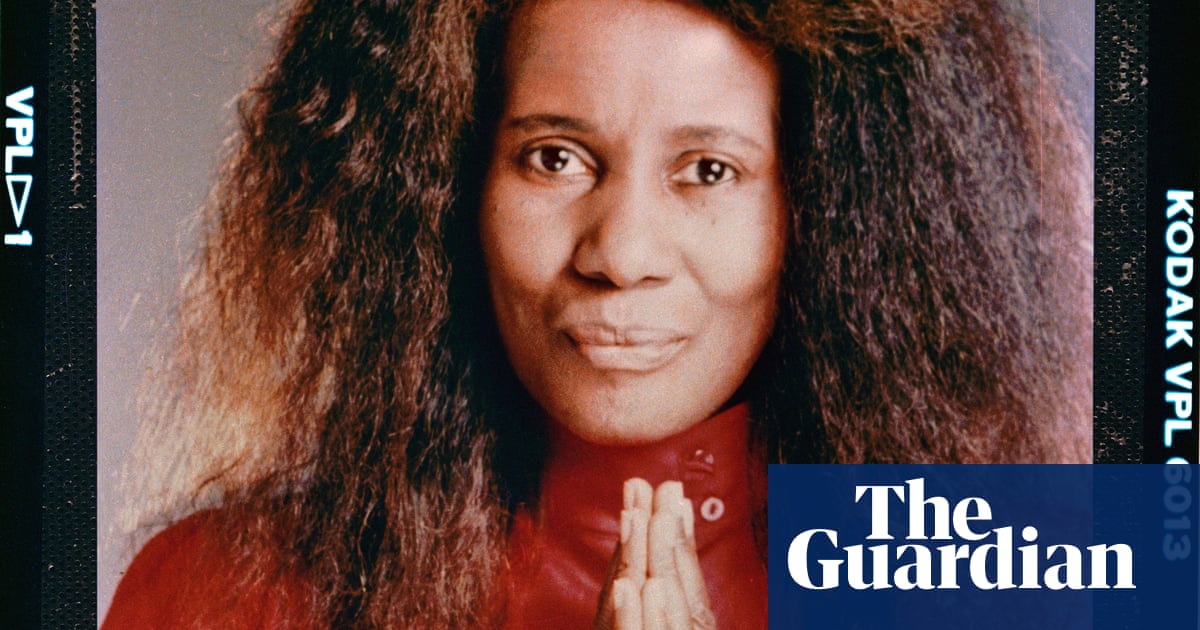Om…
Om…
Om…
Sita Coltrane always opens with threeoms. It’s a practice she inherited from her mother,Alice Coltrane, also known as Swamini Turiyasangitananda or Turiya, who used the mantra as part of her Hindu-centered practice to induce a state of calmness and connection.
“From tragedy to transcendence”, Sita said regarding how her mother’s work should be remembered in a conversation about the art exhibition named after her published diary, Monument Eternal, at the Hammer Museum inLos Angeles.
The exhibition spans 10,000 sq ft across four rooms featuring three major themes: sonic innovation, spiritual journey and architectural intimacy. It showcases tributes and interpretations from 19 artists, including pre-existing and new work inspired byAlice Coltranethat was handpicked by Hammer Museum curator Erin Christovale.
The saffron-colored walls throughout the exhibition is an ode to the color Turiya wore often, which signifies her soul’s elevation tosadhu, who, in Hinduism, are those who underwent purification produced by heat, ortapasya.
The sonic innovation room is warm. The lively color associated with the sun, fire and purity covers the 1970s-style elevated conversational couch with headsets, taking listeners through Coltrane’s discography including her 1968 solo debut,A Monastic Trio, 1970’sPtah, the El Daoud, 1971’sJourney in Satchidanandaand her 1981 tape, Turiya Sings, later discovered by her son Ravi Coltrane and published in 2021. Her chanting voice, blistering fingers grazing her harp and stretched-out toes on the organ warm the body and invite listeners to vibrate on the highest frequency.
The spiritual journey Room brings the ashram steps indoors. People are nudged to explore archival capsules of her tools such as the Wurlitzer organ, tambourines, piano, harp, sitar and voice, which are channeled through video collages such as one of Brandee Younger playing Turiya’s actual harp in Ephraim Asili’s 2024 film Isis & Osiris.
The architectural intimacy room invites visitors to experience meditative soundscapes while sitting on the ground within a bamboo curtain. Three-dimensional expressions of Coltrane’s Vedic astrology chart is materialized as a laser light show by artist Nicole Miller, its artificial solar magic creating a healing and vitality atmosphere and helping the soul remember its own higher consciousness.
The first major exhibition honoring Coltrane’s legacy is rooted in a call to action for those ready to dig deeper into their own purpose, and allowing her work to be an awakening force to guide it.
“People are latching on to her music in a moment where we need a sort of cathartic experience, we need a healing.” Christovale said. “Her music provides that. It invokes a sense of possibility in people.”
To understand Turiya, one has to respect her vibratory intentions, and know her legacy goes beyond her songs.
Some of Coltrane’s greatest wisdoms came from her books, including the Endless Wisdom series and Divine Revelations, in which she captured the depths of grief following the deaths of her husband, John Coltrane, in 1967, and their son John Coltrane Jr in 1982. Her grief pushed her into isolation and at times brought on hallucinations, a period of time that she later described as a spiritual initiation that included mediating, fasting and – at one point – going silent.
“Within a short period of time, I experienced the first rays of illumination and spiritual reawakening on the physical plane, these radiations open new avenues of awareness in the brain cells,” Coltrane wrote. “Even subtler were the inner effects of light and the cognizance of a spiritual revelation taking place within me.”
In her book Monument Eternal, she writes of how she asked to become “an instrument of the Lord” through her suffering, said Sita, who voiced the audiobook in its republishing.
Alice Coltrane grew up in Detroit, Michigan, and quickly became fluent in what she later refer to as God’s language: music.
“From a very early age, Alice was marrying the sort of sonic realm and spiritual realm, and that started for her in church,” Christovale said, adding that by age seven, Coltrane was learning the piano.
By the 60s, Coltrane had become the muse of American jazz, building a career of her own and also working alongside her husband’s group, John Coltrane Quartet. By the 70s and 80s, only a select few aligned with her experimental, telepathic music, Christovale said.
Following her spiritual awakening, Coltrane moved toCaliforniaafter “the Lord gave a ‘spiritual order’”, said Sita, citing her mother’s 1976 song Om Supreme. While in California, Coltrane opened the Vedantic Center ashram in the Santa Monica mountains of Agoura Hills, a spiritual community for connectedness to the divine.
When asked years ago during a curator forum: “if you could curate a show anywhere outside the [Hammer] Museum, where would it be?,” Christovale recalls immediately thinking of Coltrane’s ashram. The center burned down in the 2018 Woolsey fire.
From the ashes, a greater opportunity later materialized. Christovale, with curatorial assistant Nyah Ginwright, designed a way to artistically resurrect the ashram for the exhibit with Coltrane’s estate.
Christovale now feels “nothing on this project is a coincidence”, she said, believing Coltrane’s spirit has guided her throughout the entire process.
Alice Coltrane, Monument Eternal is on view at the Hammer Museum in Los Angeles through 4 May2025
